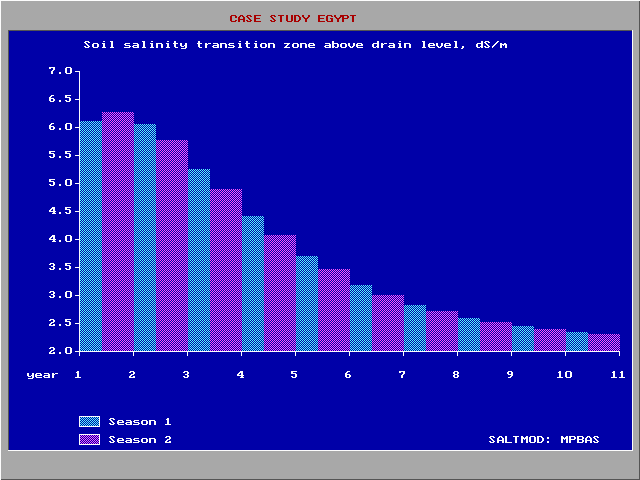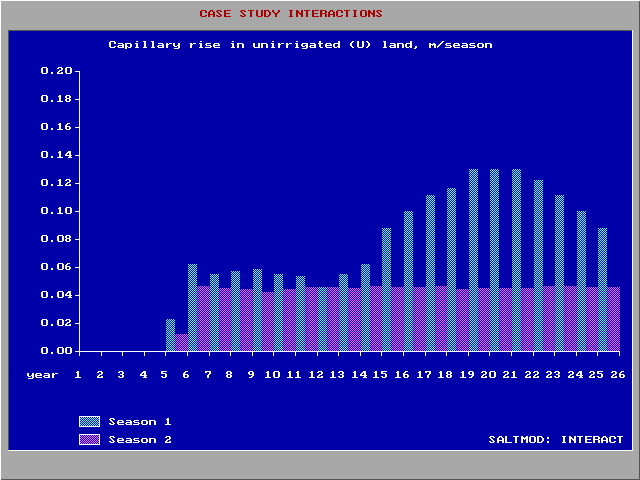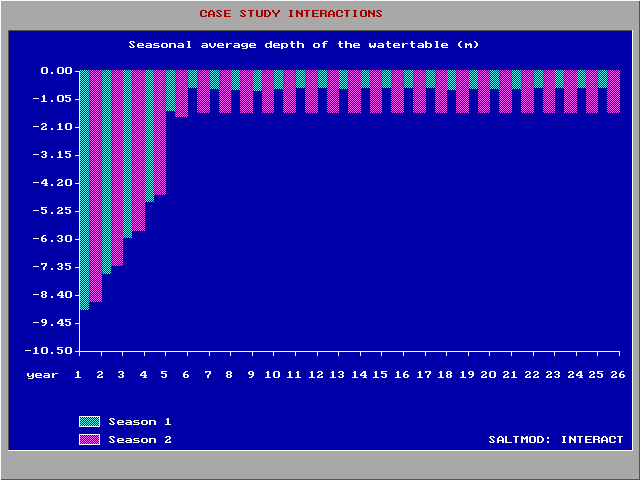|
Summary: SaltCalc is designed to simulate the depth of the water table and the soil salinity in irrigated areas with a daily, weekly ormonthly time step. SaltCalc allows the introduction of a subsurface drainage system in a transition zone between root zone and aquifer, and subsequently it determines the drain discharge. When the irrigation/rainfall is scarce and the water table is shallow, SaltCalc will calculate the capillary rise and reduce the potential evapotranspiration to an actual evapotranspiration that, although the reduction may diminished by the capillary rise. SaltCalc can also take into account upward seepage from the aquifer or downward flow into it. The latter is also called natural subsurface drainage. SaltCalc can be used when field observations of irrigation, water table and soil salinity have been made and one wishes to develop a model for that situation. Normally, calibration of unknown values must be done using a range of values of the corresponding variable, running the model repeatedly and selecting the optimal value from the range that gives model results closest to observed values. |
|
Details: This model is a simplification of SaltMod. On the one hand the water management options are fewer (e.g. re-use of drainage or well water for irrigation do not feature here), but the model runs monthly/weekly instead of seasonally. After each month/week, the program gives the user the opportunuity to change input data before it continues calculations for the next month/week. On 11 September 2014 a new version was made with an updated user interface for both input and output data handling. Upon request a version with a smaller time step (e.g. a day) can be made available. |
|
Start: The program starts clicking on SaltCalc.Exe. More information is given in the program itself. |
|
Hint: This model is somewhat similar to LeachMod. It is designed to simulate the depth of the water table and the soil salinity in irrigated areas with a time step as selected by the user. The operational possibilities are still less than in SaltCalc (for example the crop rotation is absent), but the model is more modern in the sense that the variable input for each time step is given in a table so that the calculations over all the time steps are done in one go. Moreover, by inserting the observed values of soil salinity in the data table, the model optimizes the leaching efficiency of the soil automatically. |
Further reading: A description of the principles of water and salt balances in the soil on which SalCalc is based is to be found on this balances page |
Download
SaltCalc




